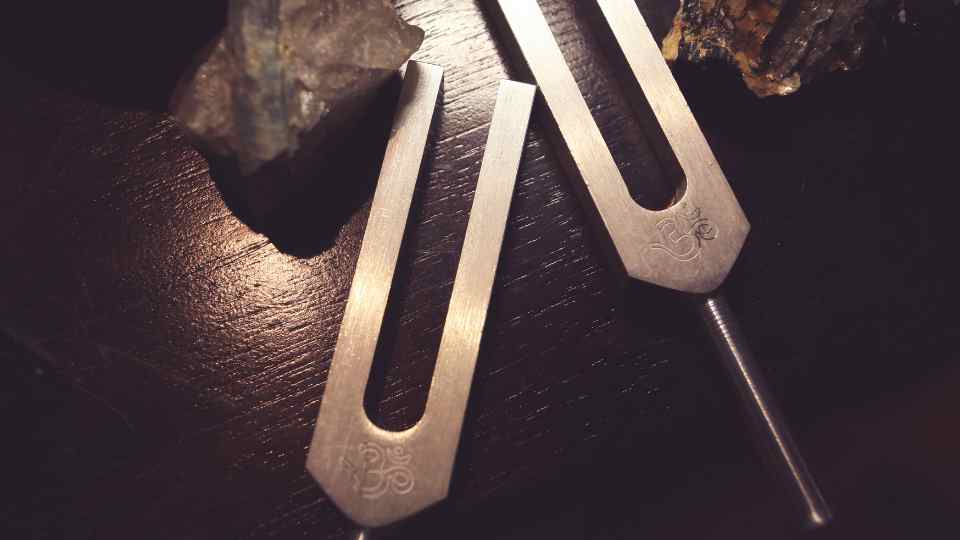The Science Behind Sound Therapy: Exploring Vibrational Medicine

The Science Behind Sound Therapy: Exploring Vibrational Medicine
Introduction
Sound therapy is an ancient healing practice that uses sound vibrations to help us relax, find balance, and improve our overall well-being. By using specific frequencies and tones, practitioners aim to affect the body's energy fields, creating harmony both physically and mentally. This approach is closely related to vibrational medicine, which looks at health and illness in terms of energy and frequency.
In this article, we will explore the interesting science behind sound therapy. We will look at its ancient origins in different cultures, understand the theories that explain why it works, and see how it is becoming more important in modern medicine. This journey will show us how traditional knowledge and current scientific knowledge come together in vibrational medicine, with sound therapy as one of its most effective methods.
The Ancient Origins of Sound Healing
The history of sound healing is rich and varied, with roots stretching back to some of the world's oldest civilisations. Early recognition of sound for its healing properties can be found in ancient Egypt and India. Egyptians used vocal toning to clear negative energy, while Indian traditions incorporated chants and mantras in their spiritual practices. These sounds were believed to align the physical body with higher states of consciousness.
Indigenous cultures around the globe have long harnessed the power of sound in their healing rituals. Native American tribes, for instance, employed drumming and chanting as a means to connect with the spiritual realm and facilitate emotional and physical healing. Similarly, Australian Aboriginals used the didgeridoo not only as a musical instrument but also for its therapeutic vibrations.
Chinese medicine has significantly influenced modern sound therapy techniques. The ancient Chinese philosophy of Qi, or life force energy, includes the use of sound through specific tones known as Sheng. These tones are said to balance the body's energy meridians, promoting overall well-being.
Ancient wisdom continues to inform contemporary practices, creating a bridge between past and present approaches to health and wellness.
Revival and Evolution: Sound Healing in the Modern World
During the Renaissance, interest in sound healing decreased as the focus shifted towards empirical science and medicine. This period marked a decline in traditional practices, with sacred sounds and vibrational methods being overshadowed by new medical paradigms. Yet, whispers of ancient wisdom continued through spoken traditions and esoteric schools.
In the 20th century, a revival of sound healing began to take shape. Pioneers such as Dr. Alfred Tomatis explored the therapeutic potential of sound, leading to a renewed interest in its applications. Dr. Hans Jenny's work with cymatics—the study of visible sound and vibration—further connected ancient techniques with contemporary science.
Sound therapy evolved to include modern contexts:
Sound baths: Using gongs, singing bowls, and other resonant instruments to create immersive auditory experiences.
Binaural beats: A technique where different frequencies are played in each ear to induce specific brainwave states.
Clinical settings: Integrating sound therapy into hospitals and wellness centres for stress reduction, pain management, and emotional release.
The revival of sound healing shows its ability to change and stay relevant over time. As modern science confirms the effectiveness of these ancient practices, we see a harmonious combination of old wisdom with new approaches, deepening our knowledge of vibrational medicine.
The Science Behind Sound Therapy
Exploring sound therapy's scientific principles reveals profound insights into the theory of sound healing. Central to this is the concept of vibrations. Vibrational frequencies are foundational to our existence, influencing both physical and mental well-being. Resonance, where an object vibrates at the same frequency as another, can harmonise and restore balance within the body.
The biofield, an energetic field surrounding every individual, interacts with these external sound frequencies. When specific frequencies are applied, they can have therapeutic effects, enhancing the body's natural healing processes.
Brainwave states are another crucial aspect. Various brainwave frequencies correlate with different states of consciousness:
Delta (0.5–4 Hz): Deep sleep
Theta (4–7 Hz): Relaxation and meditation
Alpha (7–13 Hz): Calm and alertness
Beta (13–30 Hz): Active thinking and focus
Sound therapy utilises these principles to induce desired states such as theta relaxation, promoting deep mental and physical relaxation.
Understanding these elements not only demystifies the science behind sound therapy but also underscores its potential as a powerful tool for holistic health.
Key Instruments in Sound Healing
Sound therapy sessions often incorporate a variety of instruments, each possessing unique properties and purposes. Among the most prevalent are tuning forks, renowned for their ability to deliver precise frequency applications. These tools resonate at specific pitches that can help balance the body's energy fields, aligning with the concept of resonance discussed earlier.
Tuning forks stand out due to their simplicity and effectiveness. By striking them and placing them near or on the body, practitioners can target specific frequencies to address physical or emotional imbalances. This method is particularly effective in pinpointing areas of tension or discomfort, facilitating a sense of harmony within the body's biofield.
Another notable instrument is the Shakuhachi flute, traditionally used in Zen meditation practices. This Japanese bamboo flute produces deep, resonant tones that encourage mindfulness and relaxation. The breath control required to play the Shakuhachi promotes a meditative state, fostering inner peace and enhancing the meditator's focus.
These instruments serve as powerful tools in sound healing, each bringing its own distinct benefits to the therapeutic process. Their application varies depending on individual needs and the desired outcome of the session. The exploration of such tools illustrates how ancient wisdom continues to find relevance in contemporary wellness practices.
The Effectiveness of Sound Healing: Scientific Research and Case Studies
Sound therapy has gained increasing attention from the scientific community, leading to a growing body of research that explores its therapeutic benefits. Scientific evidence supports the effectiveness of sound healing interventions across various areas.
Notable Studies and Their Findings
Stress Reduction: A study published in the Journal of Evidence-Based Integrative Medicine found that sound meditation, including the use of Tibetan singing bowls, significantly reduced tension, anger, and fatigue among participants.
Pain Management: Research highlighted in Pain Research and Management demonstrated that patients with chronic pain experienced notable relief after sessions involving low-frequency sound stimulation.
Improved Sleep Quality: The Journal of Alternative and Complementary Medicine reported improvements in sleep quality for individuals undergoing sound therapy using binaural beats.
Key Benefits Supported by Research
Stress Reduction: Vibration frequencies used in sound therapy can activate the parasympathetic nervous system, promoting a state of calm and relaxation.
Pain Management: Specific sound frequencies can influence pain perception by modulating neural pathways involved in pain processing.
Improved Sleep Quality: Sound frequencies like delta waves are known to facilitate deep sleep, helping individuals achieve restorative rest.
Case Studies Illustrating Successful Outcomes
In clinical settings, case studies provide compelling evidence of sound therapy's practical benefits:
Case Study 1: A patient with fibromyalgia reported a significant decrease in pain levels and an increase in mobility after regular sessions with tuning forks. The consistent application of specific frequencies seemed to alleviate chronic symptoms effectively.
Case Study 2: An individual suffering from severe anxiety found relief through guided sound meditation incorporating gongs and chimes. Over several weeks, their anxiety levels dropped considerably, enhancing their overall quality of life.
Sound healing continues to evolve as more research validates its effectiveness, making it a promising complementary approach within clinical practice.
Integrating Sound Therapy into Modern Healthcare
The tide is shifting as sound therapy gains traction in mainstream healthcare practices. Hospitals and rehabilitation centres are recognising the profound benefits of incorporating sound-based treatments into patient care routines. For example, some hospitals now offer sound baths and tuning fork therapy to support stress reduction and pain management for patients undergoing intensive treatments. These therapeutic sessions utilise specific frequencies to promote relaxation and facilitate healing, providing a non-invasive, calming adjunct to conventional medical procedures.
In holistic wellness clinics, sound healing is often integrated with other modalities to create comprehensive treatment plans tailored to individual needs. Combining sound therapy with practices like acupuncture, massage therapy, and mindfulness meditation fosters a synergistic effect that enhances overall well-being. This multi-modal approach aligns with the principles of holistic health, which emphasise treating the whole person—mind, body, and spirit—rather than merely addressing symptoms.
The rising popularity of sound therapy in modern medicine highlights a growing appreciation for ancient wisdom blended with contemporary scientific understanding. As more healthcare providers embrace this integrative approach, patients stand to benefit from a richer tapestry of healing options designed to nurture their physical and mental health.
Examples of Sound Healing Applications
Sound therapy shows remarkable promise in addressing various health conditions. For instance, insomnia sufferers often find relief through the use of calming soundscapes or binaural beats that promote delta brainwave activity, essential for deep sleep. Similarly, those battling anxiety disorders may benefit from therapeutic sessions that employ soothing frequencies to reduce stress and induce a state of relaxation.
Here are a few more examples of how sound healing can be applied:
Chronic pain management: Sound therapy can be a powerful tool here. Techniques like vibroacoustic therapy utilise low-frequency sound waves that resonate through the body, helping alleviate pain and improve mobility.
Supportive therapy for cancer patients: During treatment, sound healing serves as a complementary approach to ease emotional distress and reduce side effects such as nausea and fatigue. Instruments like Tibetan singing bowls or crystal bowls are often used to create a peaceful environment, aiding in the overall healing process. This approach aligns with the principles of music therapy, which has been widely recognized for its positive impact on cancer patients' well-being.
These applications highlight how sound therapy integrates ancient wisdom with modern therapeutic needs, offering holistic solutions tailored to individual health challenges.
Ancient Wisdom Meets Modern Soundscapes: Cultural Perspectives on Sound Healing
Exploring cultural perspectives on sound healing reveals a rich tapestry of ancient practices and modern interpretations. Traditional beliefs and methods provide a foundation for contemporary sound therapy, bridging the gap between past and present.
Ancient Tibetan Singing Bowl Ceremonies
Vibrational Balance: Tibetan singing bowls have long been used in sacred ceremonies to achieve vibrational balance and healing. These bowls produce harmonic overtones that align with the body's energy fields, fostering a state of deep relaxation and spiritual well-being.
Aboriginal Australian Culture
Connection to Land Restoration: In Aboriginal Australian culture, sound plays a crucial role in spiritual well-being and land restoration. Instruments like the didgeridoo are not just musical tools but sacred items that connect individuals to their land, ancestors, and communal identity. The deep, resonant sounds are said to induce states of healing and mindfulness.
Contemporary sound healing takes inspiration from these ancient practices while integrating modern technology and scientific understanding. This blend creates a holistic approach that honours tradition while utilizing today's advancements.
The Future Potential of Sound Therapy
Emerging trends and innovations in the field of sound therapy are paving the way for a more personalised and immersive healing experience. One exciting development is the use of interactive technologies that tailor sonic experiences to individual needs. These technologies can analyse a person's physiological data, such as heart rate and brainwave activity, to create customised soundscapes that promote optimal well-being.
Sound healing is increasingly being integrated into holistic and patient-centred healthcare systems. This integration aims to address not just physical symptoms but also emotional and psychological well-being. For example, hospitals and rehabilitation centres are beginning to incorporate sound therapy as part of comprehensive treatment plans, recognising its potential to alleviate stress, reduce pain, and improve overall patient outcomes.
The future of sound healing holds promise for expanding our understanding of how vibrational medicine can contribute to health. As research continues to validate its benefits, sound therapy may become a staple in both mainstream and alternative medicine practices, offering a non-invasive, effective approach to healing.
Conclusion
Exploring the benefits of sound therapy with a qualified practitioner can open doors to profound personal transformation. The harmonious blend of ancient wisdom and scientific understanding defines vibrational medicine, positioning sound therapy as a powerful method within it. Embrace this journey for a balanced and enriched well-being.





